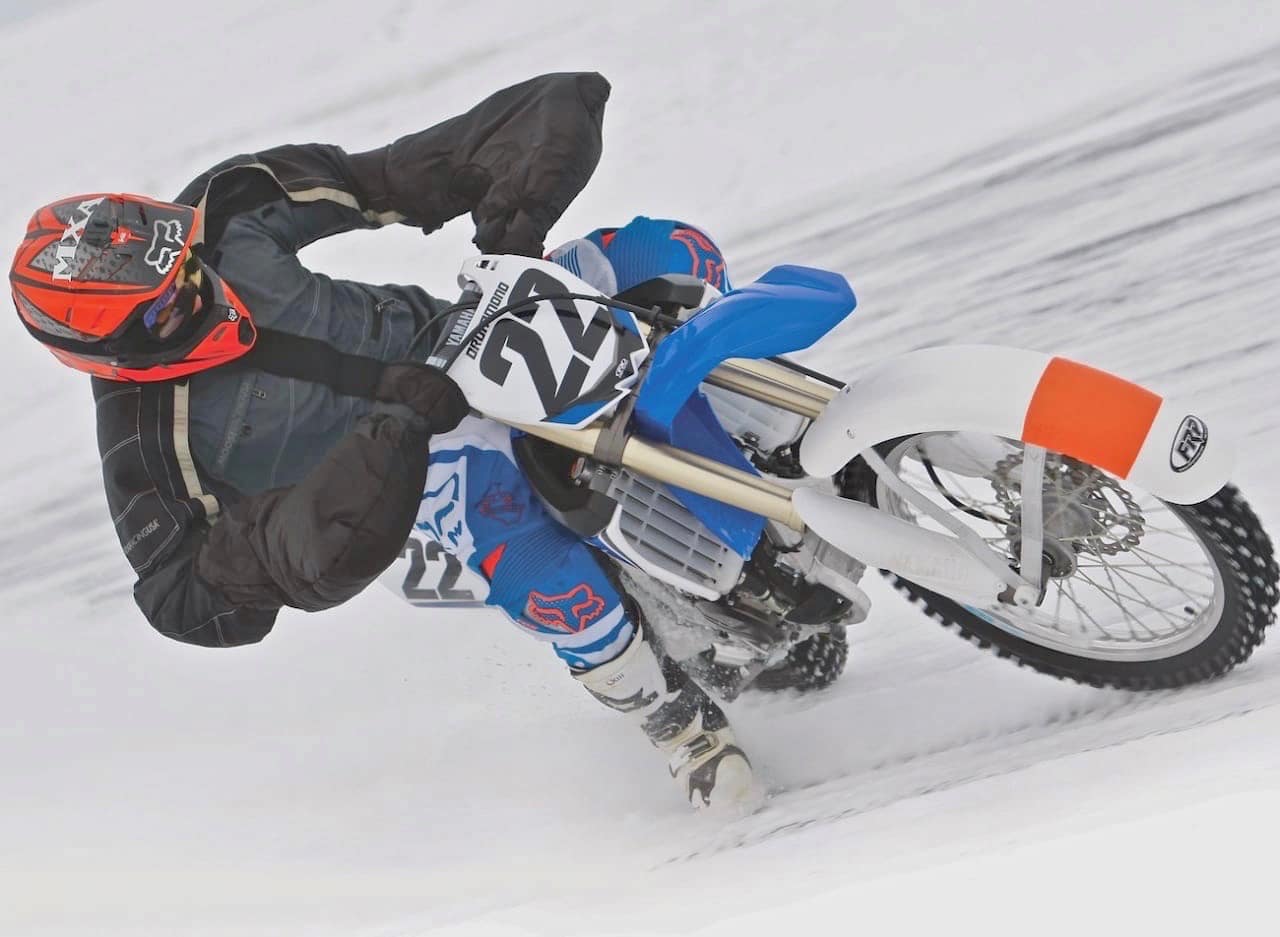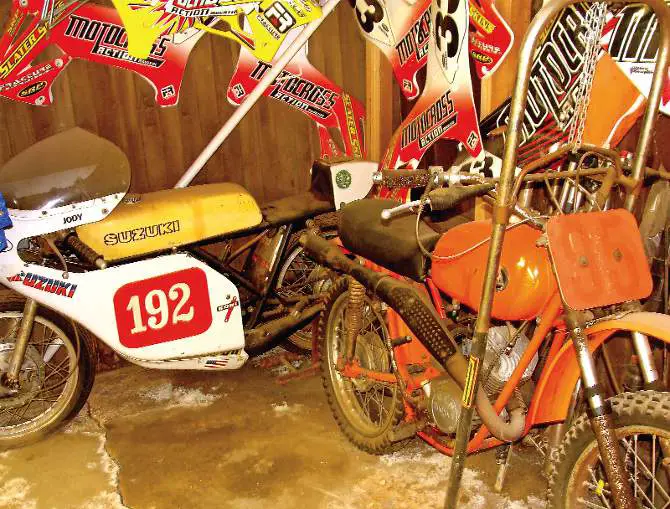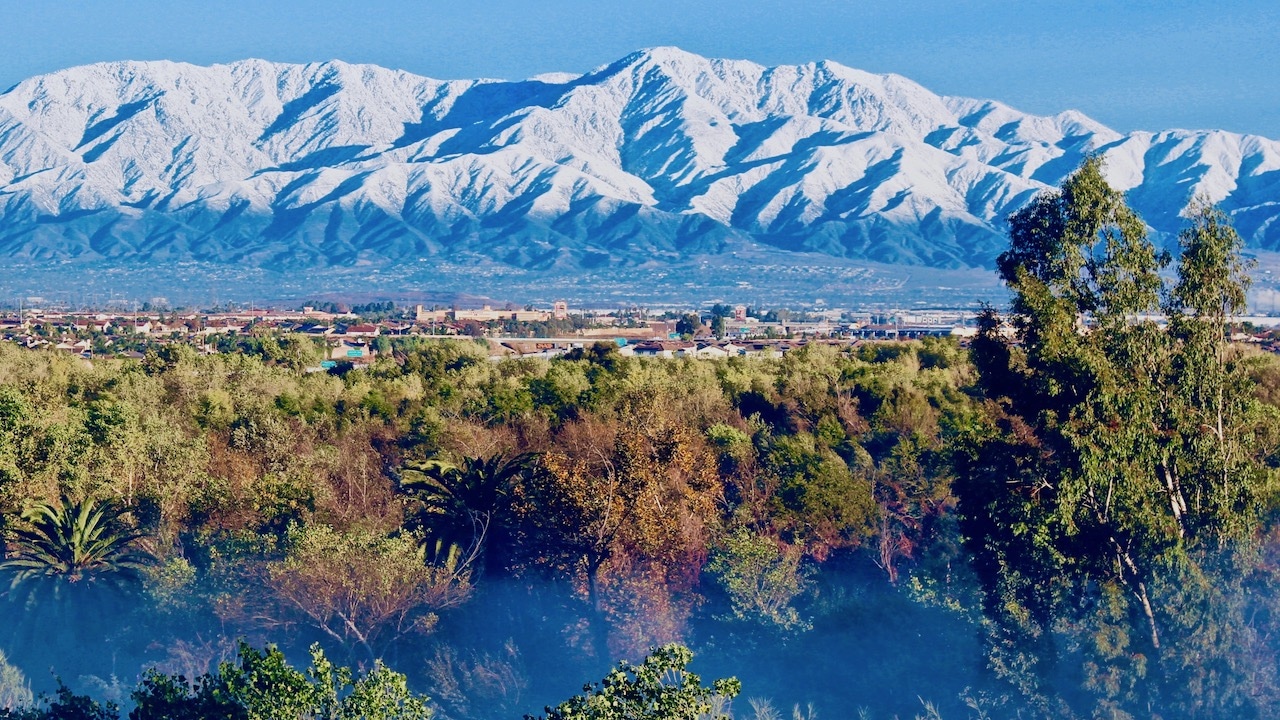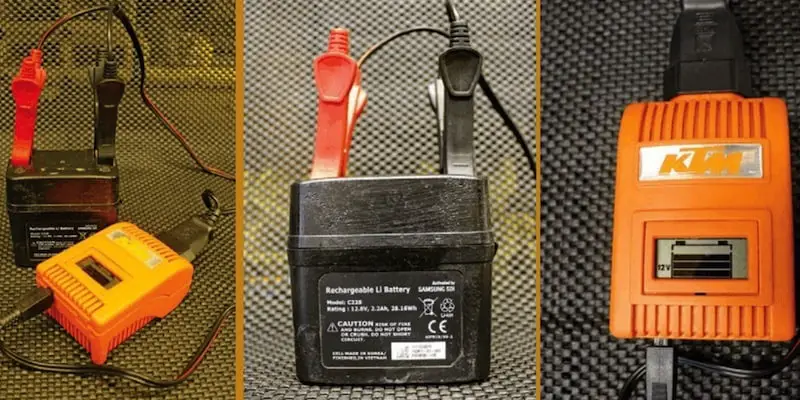TEN THINGS ABOUT STORING YOUR BIKE FOR WINTER
 Ride your bike this winter—even if its only for one day a month. Here, MXA’s Daryl Ecklund goes ice racing on a YZ450F.
Ride your bike this winter—even if its only for one day a month. Here, MXA’s Daryl Ecklund goes ice racing on a YZ450F.
(1) Best case scenario. The best way to keep your bike in good condition in the winter is to ride it, but that isn’t always possible. In many cold climates, your trusty but rusty race bike has to be put away until the snow melts. Before putting it away for the winter, wash the bike thoroughly, then ride it around for about five minutes (even if it’s just around your driveway) to help dry up the moisture in the wheels and linkage. You want to race-prep your bike, even though you have no intention of racing it for a couple of months.
(2) Go lube crazy. Once every part of the bike is spotless, spray the chain with a water-dispersing lubricating oil like Maxima MPPL. Wipe off the excess lube oil and spray chain lube on the chain (spinning the wheel in both directions). Next, take the lubricating oil and spray the footpeg pivots, shock threads, shift lever, shock threads, and any other folding, moving or bending parts.
(3) Don’t drain it. Add oil, air and water. Fill the tires up to 15 pounds of pressure. Change the engine and tranny oil for storage. Although this isn’t a must-do, it is smart to drain the water from the engine and replace it with fresh coolant. Water-cooled bikes need to have the correct antifreeze in the cooling system. Do not drain the bike of all of its water, oil, air or gas.

MXA’s workshop has bikes that have been stored a lot longer than just last winter.
(4) Fill it up. Brake fluid is prone to collecting water over time. Your best defense against this is to make sure that all the master cylinders are full. If it is old fluid, replace all of it with the recommended grade for your bike.
(5) Lift off. Put the bike up on a stand. Make sure that the tires are off the ground when you store your bike (this can be a problem with some Honda, Yamaha and KTM models, so you may have to put a block under the front or rear of the frame to get the wheels up). It doesn’t hurt to spin the tires once a week or so just to spread the chain lube and wheel-bearing grease around.
ANY TIME YOU GET A CHANCE TO START YOUR ENGINE DURING THE DEAD OF WINTER, DO SO. BUT, IF YOU CAN’T START IT AND LET IT RUN FOR A REASONABLE TIME, DON’T START IT AT ALL.
(6) Beach blanket bingo. Don’t cover your bike with a sheet of plastic; it can trap condensation under it and make your bike damper than if it were uncovered. Plus, plastic can discolor your bike’s plastic over time. Instead, use an old blanket or cloth tarp to keep dirt and grime off your bike.
(7) Short change. Any time you get a chance to start your engine during the dead of winter, do so. But, be sure to let it run for as long as possible. Running the engine is good for it, but running it for five minutes will not get it hot enough to achieve the sealing and lubrication effects you want. If you can’t start it and let it run for a reasonable time, don’t start it at all.
(8) Ever ready. Electric start bike owners need to think about the bike’s battery. The best plan is to remove the battery from the bike and place it on a wooden block (not on concrete) in the garage or workshop. Top off the electrolyte level (if it has a lead acid battery), clean the terminals and invest in a trickle charger (or come out once a month and put the battery on a battery charger for a day). If your bike is going to be stored anyplace where it could freeze, remove the battery and store it indoors.
(9) Fuel stabilizer. If you can, fill the gas tank all the way to the top and add a fuel stabilizer, then run the engine long enough to get the stabilizer throughout the fuel system’s lines. Why should you fill the tank to the top? Because a full tank has less room for condensation to form.
 Luckily, the snow in SoCal is normally confined to the mountains that ring the L.A. Basin. This is the view from MXA’s workshop.
Luckily, the snow in SoCal is normally confined to the mountains that ring the L.A. Basin. This is the view from MXA’s workshop.
(10) When winter is over. Once you decide that winter is over, you should follow these steps before riding your bike:
(a) Drain the fuel out of the float bowl so that the fresher fuel can come down from the fuel stabilizer in the gas tank.
(b) Change the engine oil again. Yes, we know that you didn’t get it dirty, but it is best to change it after it has collected moisture over the winter.
(c) Air up the tires. They will have lost pressure over the winter. Re-lube everything that you lubed before you stored the bike, and check under the bike for any signs of leaks. It is best to do this after you warm up the engine. Be prepared to change any fluids that don’t seem up to snuff on the first ride. If you followed every step, your bike will work exactly as it did on the day you stored it. How good was that?







Comments are closed.